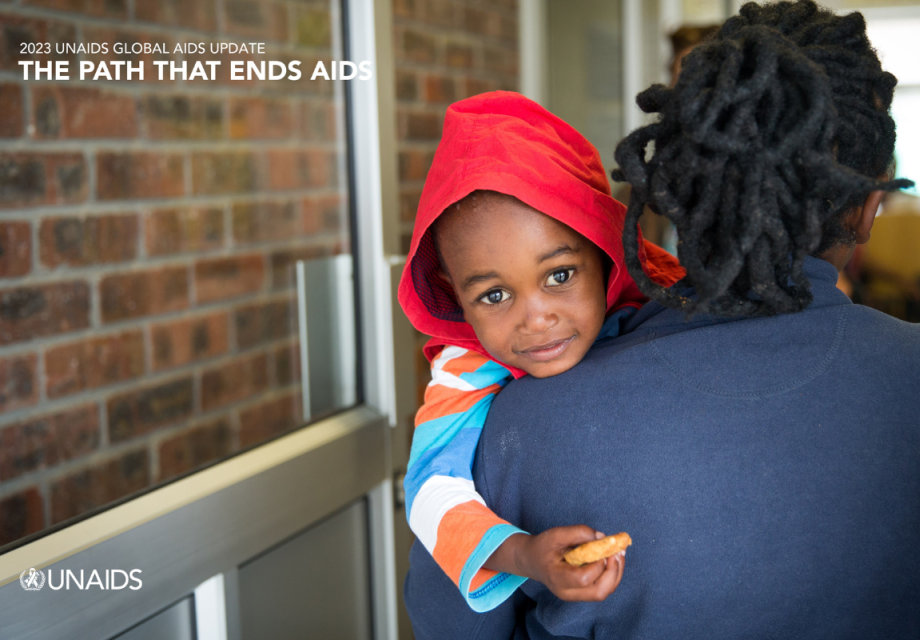Is ending AIDS by 2030 possible?
Hester Phillips
21 July 2023
UNAIDS’s newly released 2023 Global AIDS Update sets out a clear path to ending AIDS this decade. But warns that failure to act could prolong the pandemic “indefinitely”
In its latest global update, UNAIDS describes ending AIDS as a political and financial choice – but will countries take the action necessary to finally bring the HIV pandemic to a close?
What is the report about?
Every year, the UNAIDS Global AIDS Update gives an overview of the HIV pandemic across the world. The 2023 report is based on 2022 data.
Why is this report important?
Measuring and reporting on the HIV pandemic globally, regionally and nationally is essential for keeping responses on track, particularly with the 2030 deadline to end AIDS as a public health threat getting nearer.
What does it say?
In 2022, 39 million people were living with HIV. Of these:
-
86% knew their HIV status
-
76% (29.8 million people) were on antiretroviral treatment (ART)
-
71% were virally suppressed (76% of women and 67% of men with HIV)
-
1.3 million people got HIV in 2022
-
630,000 people died from an AIDS-related illness.
The good news
The number of new HIV infections is the lowest since the late 1980s. Declines are especially strong in regions with the biggest HIV epidemics.
Children (ages 0–14) and young people (ages 15–24) have experienced the steepest drop in new infections due to effective interventions in recent years.
An additional 1.6 million people began ART each year between 2020 and 2022. If this can be maintained, the global target of 35 million people on ART by 2025 can be reached.
Access to ART has expanded massively in sub-Saharan Africa and Asia and the Pacific.
Botswana, Eswatini, Rwanda, Tanzania and Zimbabwe have now achieved the 95–95–95 targets. At least 16 other countries (8 in sub-Saharan Africa) are close.
In 2022 and 2023, Antigua and Barbuda, Barbados, Cook Islands, Saint Kitts and Nevis and Singapore decriminalised same-sex sexual relations.
The bad news
Despite this progress, in 2022:
-
9.2 million people with HIV were still not on ART (including 43% of children with HIV), with progress particularly bad in eastern Europe and central Asia (EECA) and the Middle East and North Africa (MENA)
-
2.1 million people on ART were not virally suppressed
-
HIV infections rose “alarmingly” in some countries (mainly in EECA and MENA)
-
4,000 adolescent girls and young women got HIV every week
-
in sub-Saharan Africa, women and girls made up 63% of all new HIV infections
-
only 42% of districts with very high HIV incidence in sub-Saharan Africa have prevention programmes for adolescent girls and young women
-
sex workers, transgender people, people who inject drugs, gay and bisexual men and other men who have sex with men remain disproportionately affected by HIV
-
Indonesia, Nigeria, Pakistan, Uganda and Zimbabwe introduced more repressive laws against people most affected by HIV
-
There is a funding gap of US$ 29.3 billion needed by 2025 to fully respond to HIV.
Ending AIDS by 2030
To end AIDS as a public health threat by 2030, each country needs an HIV response that:
-
has strong political leadership to follow the evidence
-
tackles the inequalities that hold back progress
-
values and includes communities and civil society organisations
-
has enough sustainable funding.
Not only will this put countries on track to end AIDS by 2030, it will help them prepare for future pandemics and make progress on other Sustainable Development Goals.
Crucially, the report says that “failure to protect people within key and other priority populations…against HIV will prolong the pandemic indefinitely, at huge cost to the affected communities and societies”.
One of the biggest barriers to HIV services for many groups most affected by HIV is criminalisation. Yet most countries still criminalise drug use and sex work, 67 criminalise same-sex sex, 20 countries criminalise transgender people and 143 countries criminalise HIV exposure, non-disclosure or transmission.
What does this mean for HIV services?
In her foreword to the report, Winnie Byanyima, UNAIDS Executive Director, says the organisation “joins with communities around the world in urging leaders to demonstrate the will to lead us along the right path [to ending AIDS]”.
This report can be used to make the case that the targets governments have committed to will be missed unless action is taken.
What actions are needed will depend on the setting you work in and the communities you represent. It may make sense to select one or more of the four key elements needed for an effective HIV response and use it to frame your arguments. For example, you could present evidence on the need for – and benefits of – sustainable investment in HIV prevention services for adolescent girls and young women. Or to challenge discriminatory laws, policies or practices that are stopping criminalised groups from getting the HIV services that they need and would make a huge contribution to protecting public health.
Get our news and blogs by email
Keep up-to-date with all our latest news stories and blogs by signing up to the Be in the KNOW news digest.
